Southern Africa - South Africa, Botswana, Zimbabwe, Zambia, Namibia
August 23 - September 15, 2016
Part Two, Page Two- Kruger National Park, South Africa
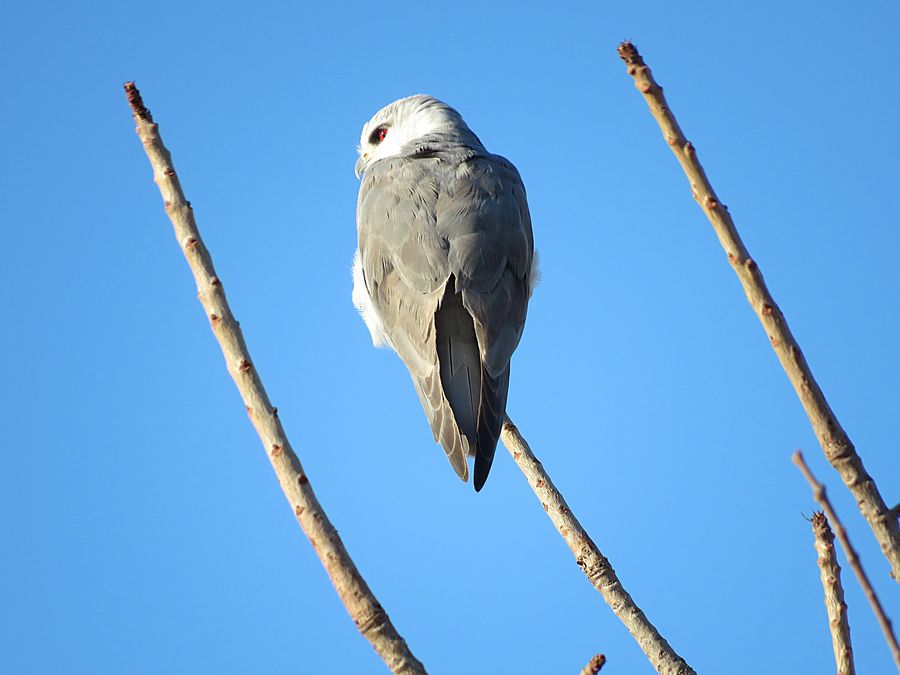
Black-Shouldered Kite - a small pale gray raptor with a snow-
white head and underparts and black shoulder patches. The eyes
are bright red. Often perches on the highest available point.
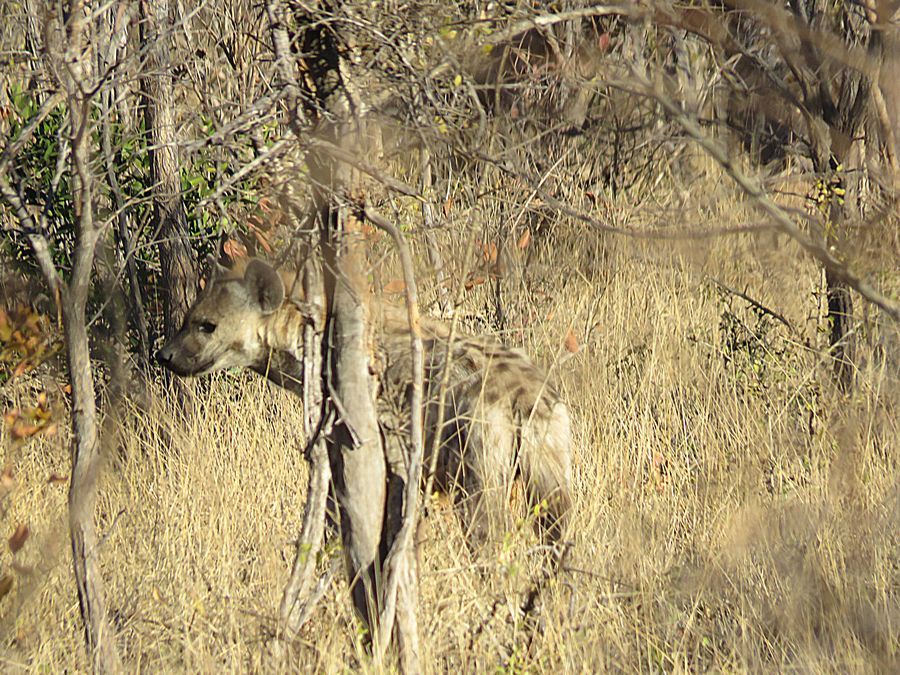
Spotted Hyena - The coat is fawn with dark blotches that
become fainter with age. Mostly nocturnal. They typically
live in clans of varying size with larger females dominating
males and one female the matriarch. We often heard them
at night.
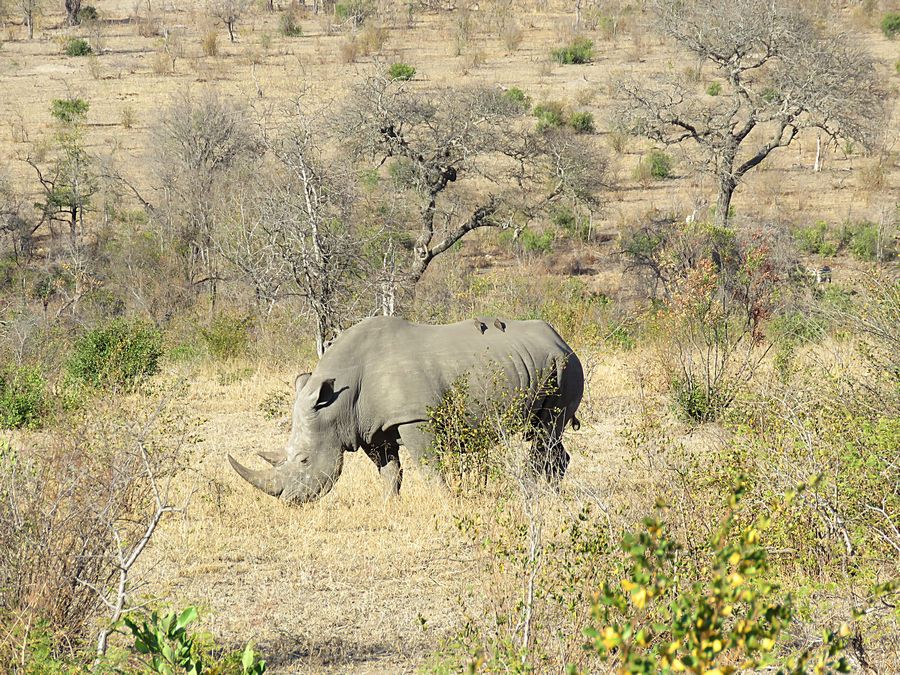
A Black Rhinoceros with red-billed 0xpeckers on top.
The black rhinoceros is a species of rhinoceros, native
to eastern and southern Africa. Although the rhinoceros is
referred to as black, its colors vary from brown to gray.
Rhinos are critically endangered. As a result of heavy poaching,
scattered populations are now only found in protected areas,
where parks still are struggling against poaching.
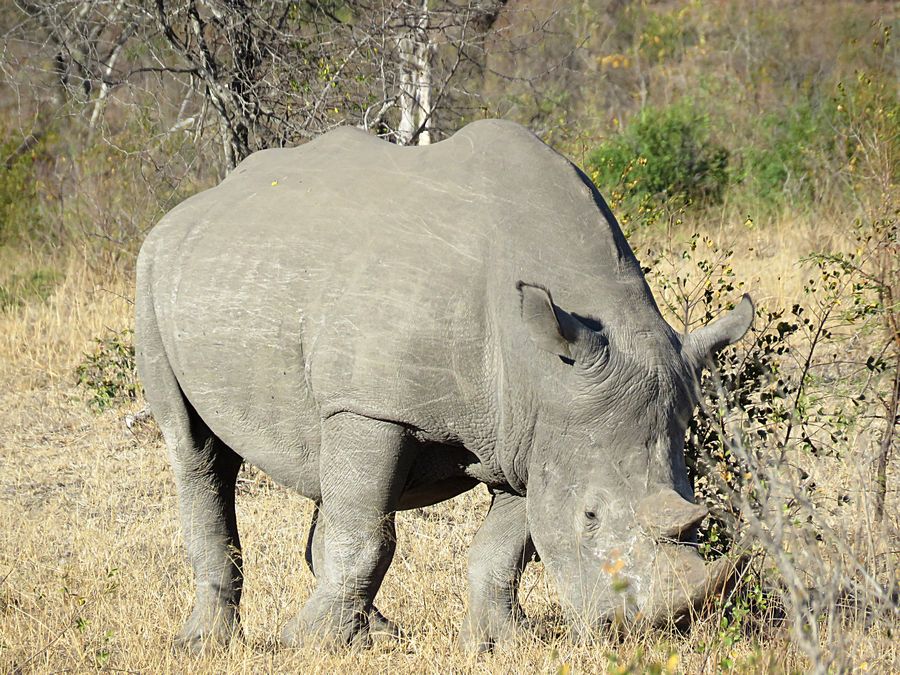
The head is large and has two horns. The ears are rounded
and fringed with tufts of black hair. Eyes are small and their
eyesight is poor, but they have an acute sense of smell and
hearing.
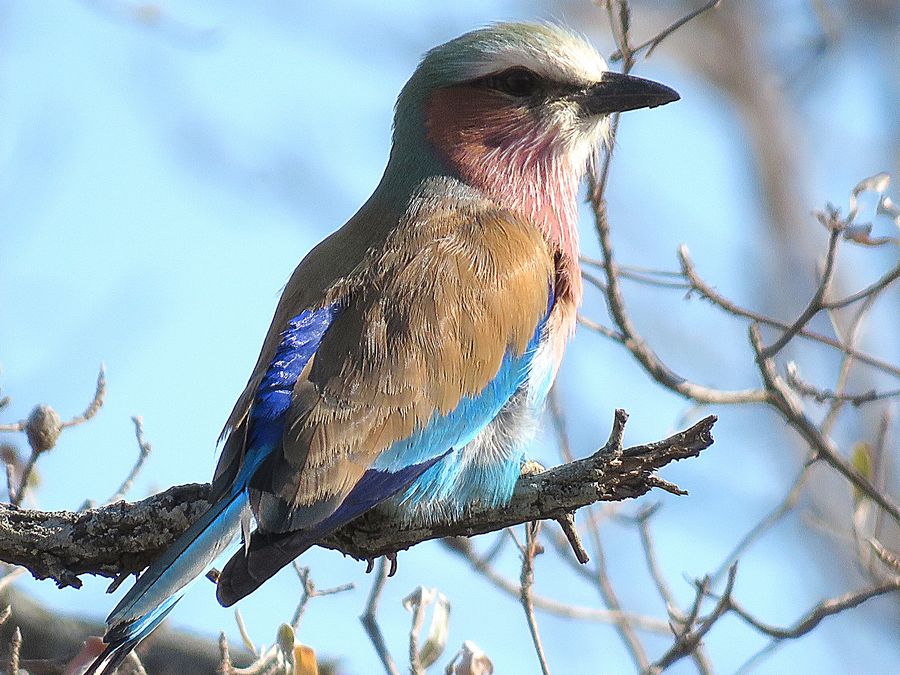
Another Lilac-breasted Roller

Blacksmith Lapwing - is found in short grassland areas
and on margins of water bodies, which is where we saw
this one. Forehead and crown are white and breast is black.
The eyes are blood red. It lays its eggs on bare ground
relying on nest camouflage.

Large numbers of impala gathering at a large pond to drink,
where two hippos were relaxing in the water.
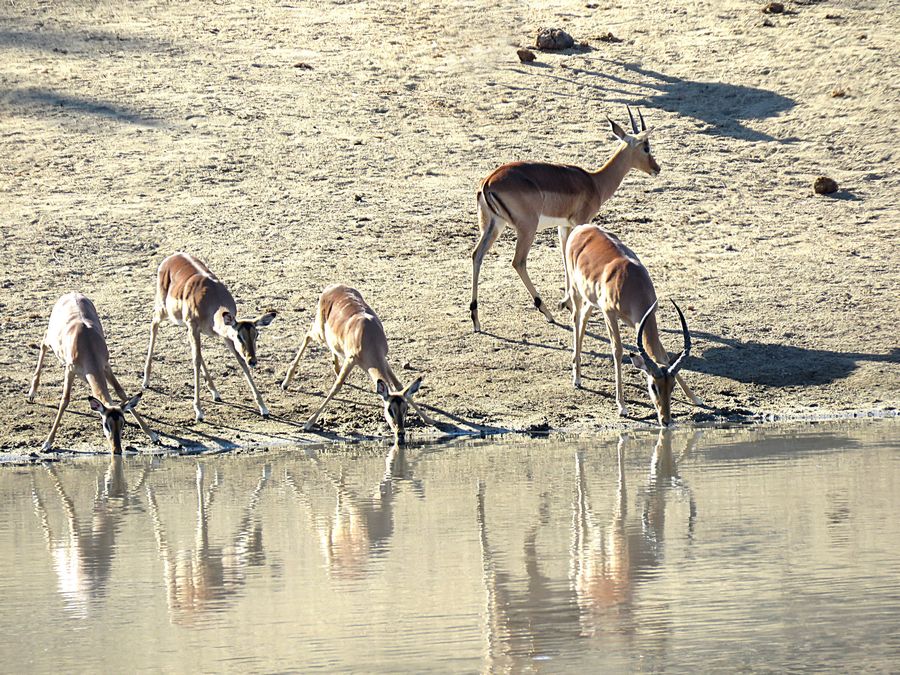
Notice how they spread their front legs to drink.
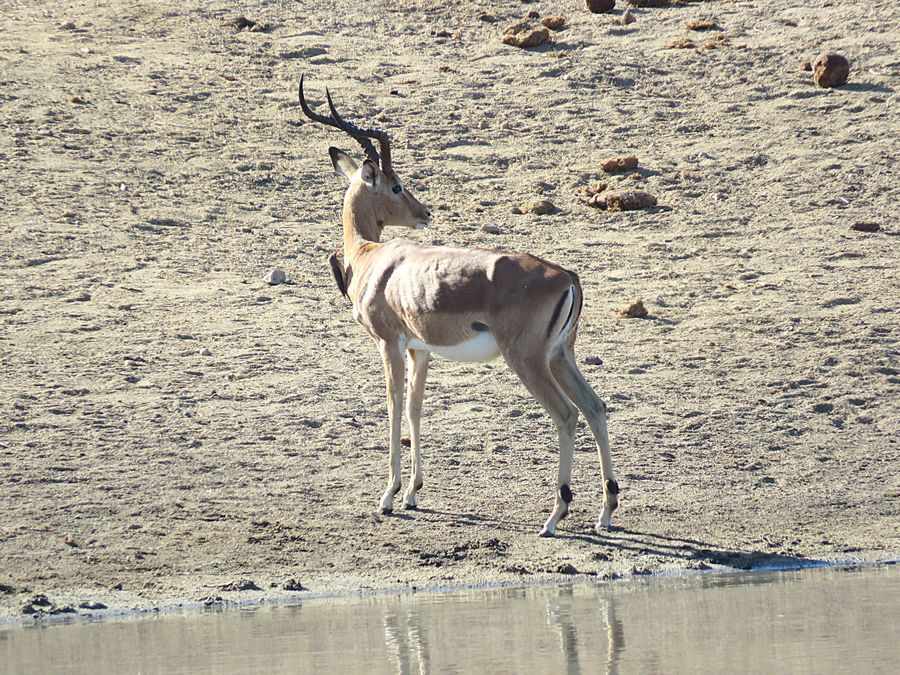
Male impala with typical red-billed oxpecker on him.
Red-billed oxpeckers prefer giraffe and antelope species.
Yellow-billed oxpeckers prefer buffalo and hippo.
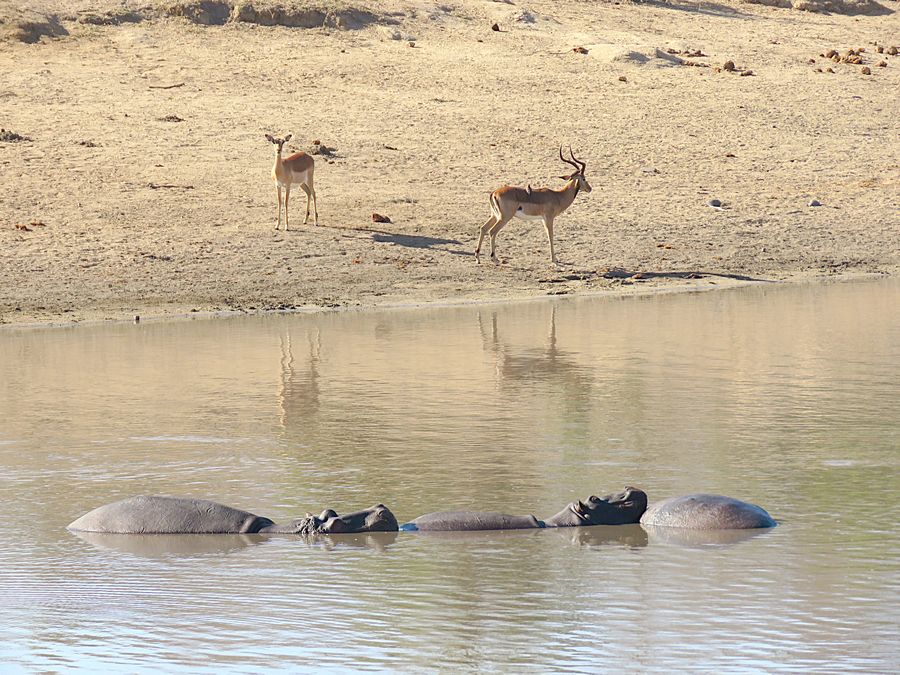
Most of the impala have wandered away, and
a female and male are about to depart leaving
the hippos sleeping.
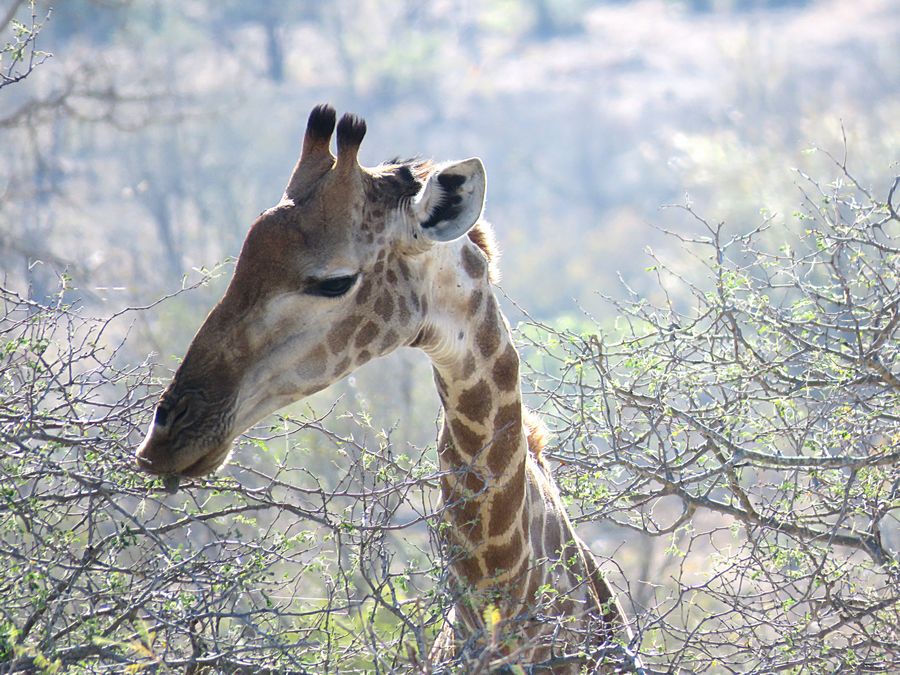
Closeup of a giraffe. Notice the tufted small horns.
This is a female. The horns of males are bald on their tips.
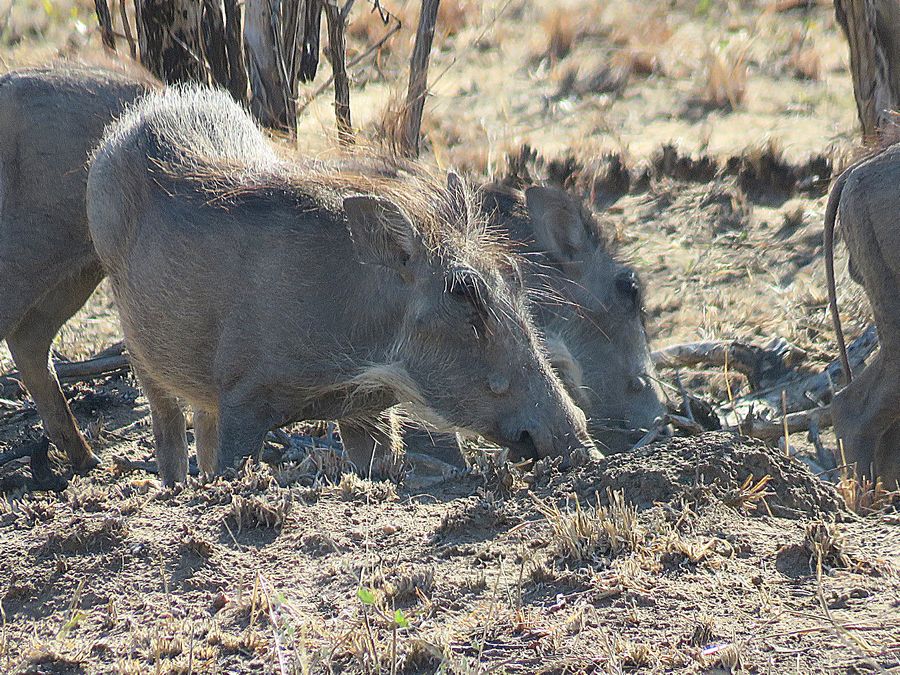
Young warthogs eating

Klipspringer - found on steep rocky hill sides and high
mountains. It is a small antelope with a coat of olive gray
hair. The ears are white-lined with prominent black markings.
Only the male has horns.
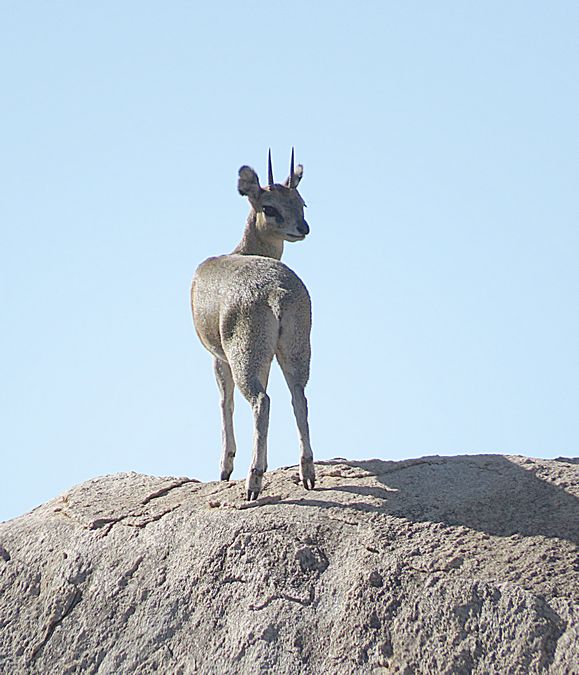
Their black hooves are specially adapted for rocky ground,
giving the appearance of standing on tiptoe. The tail is very
short. They are often seen, as here, standing atop a rock or boulder
watching alertly for predators. They feed on leaves, shoots,
and berries, and very occasionally grass.
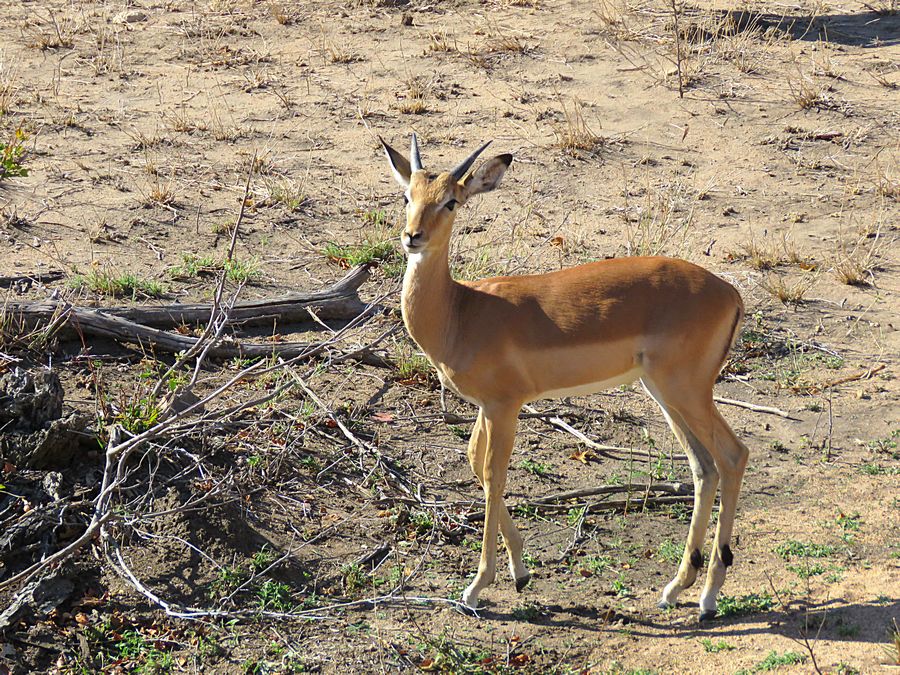
A young male impala
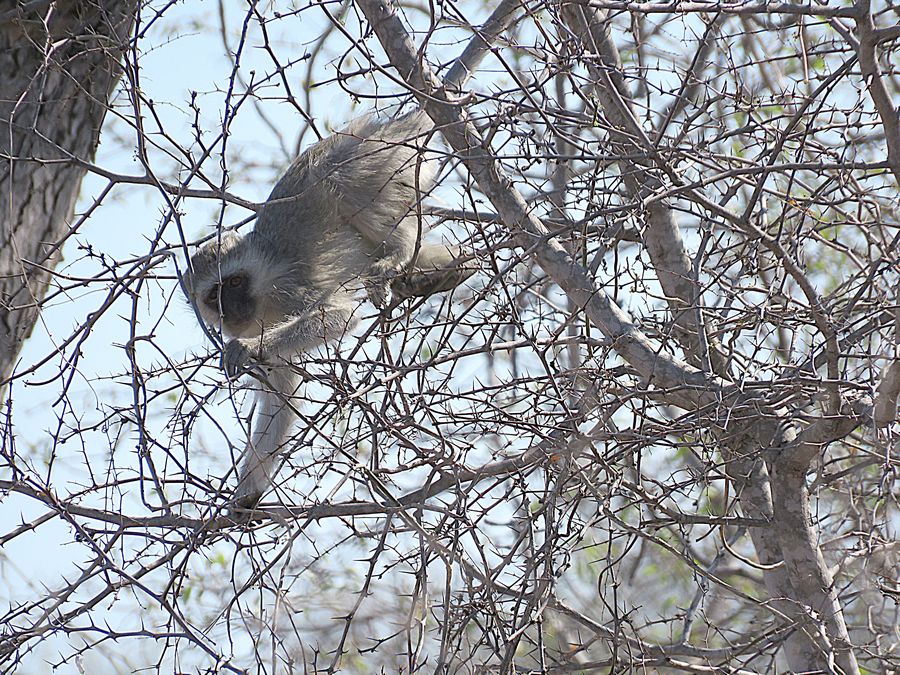
Vervet monkey showing agility
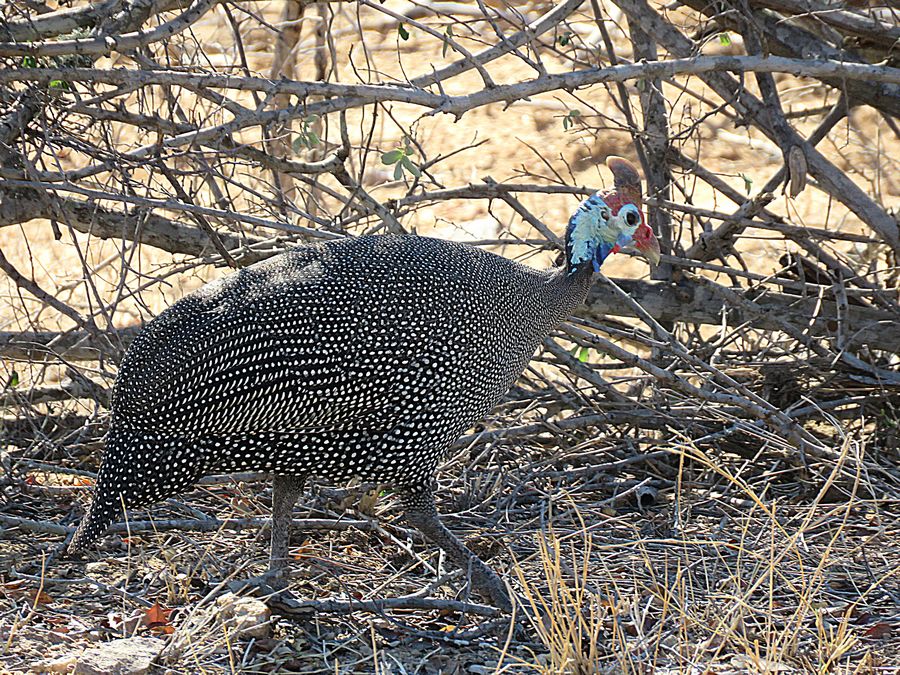
Helmeted Guineafowl - Charcoal gray bird profusely spotted
in white. The bare facial skin is largely blue, with a variable
amount of red around the eyes. Lives in flocks in dry woodland,
and is especially abundant along the Chobe River, where indeed
we did see them in large numbers later in the trip.

Note helmet shaped casque at top of head. They feed on
termites, beetles, and seeds.
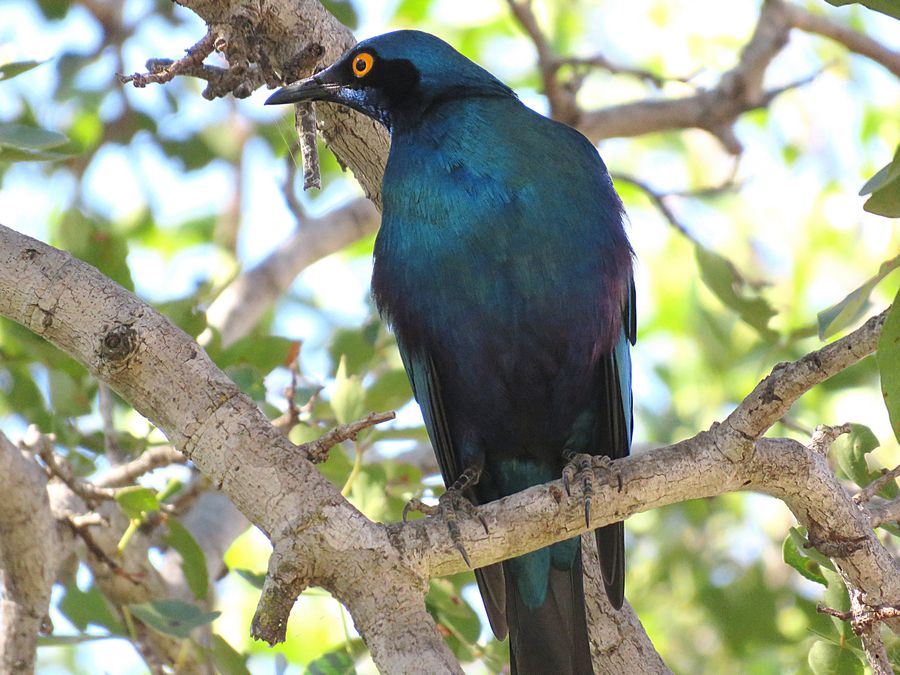
Greater Blue-Eared Starling - Glossy blue with yellow eyes and dark ear patches.
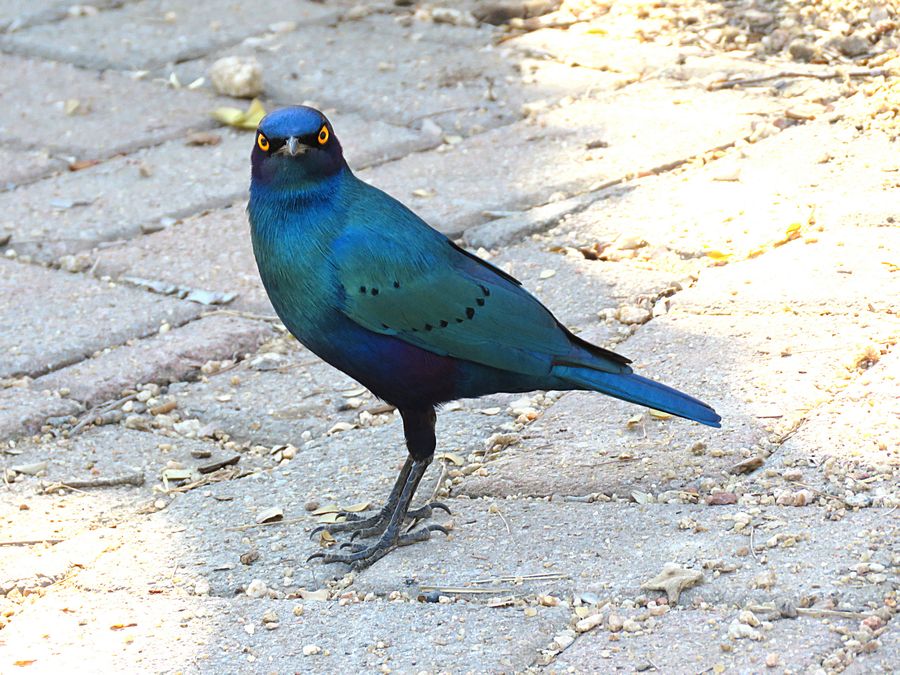
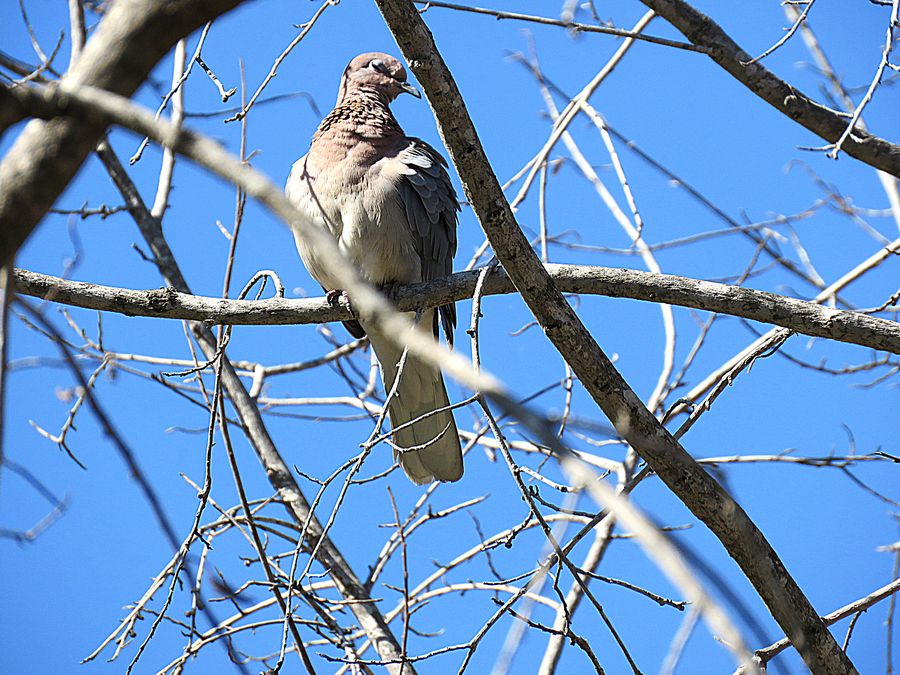
Red-eyed Dove - large pink-headed dove with rosy pink breast.
Feeds on seeds and small berries.
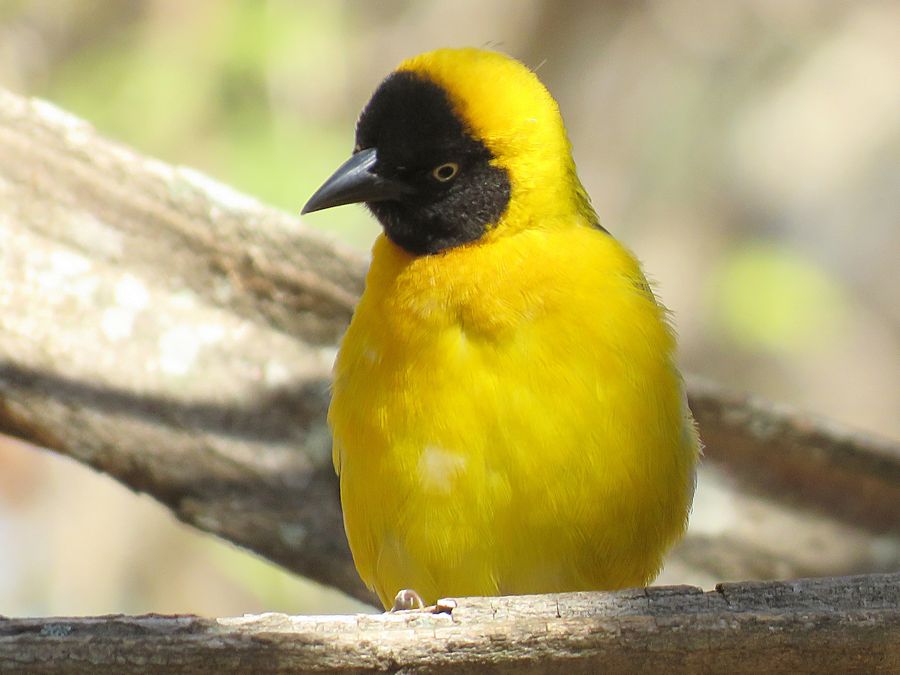
Masked Weaver - seeds make up the bulk of its diet.
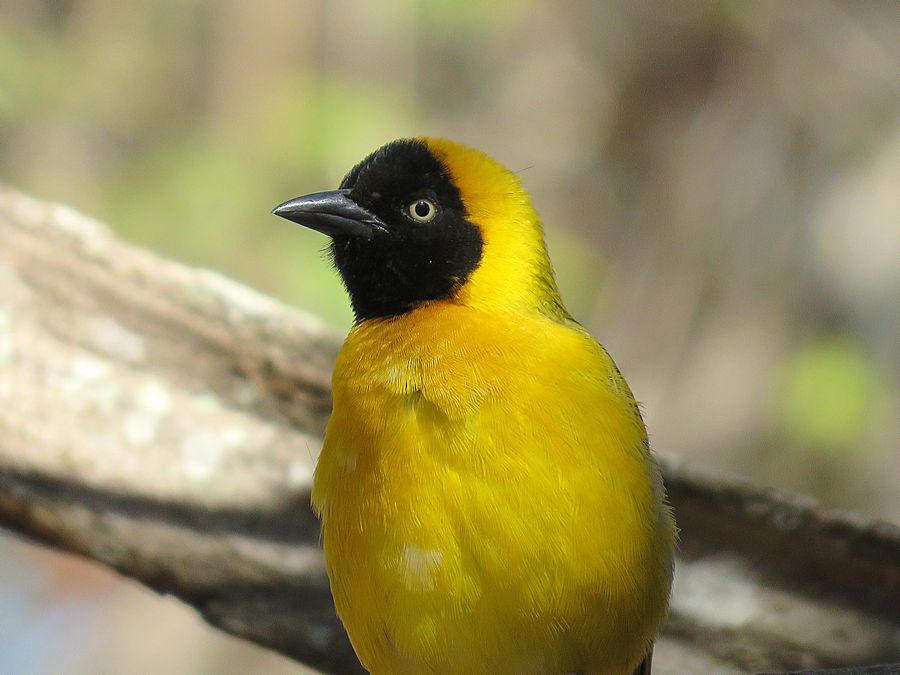
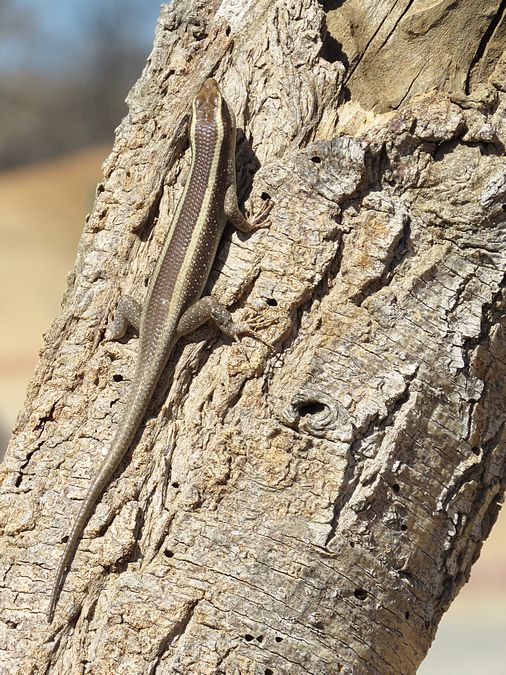
Lizard - I believe this is a striped skink lizard, which frequents
rock outcroppings, trees, and urban areas.
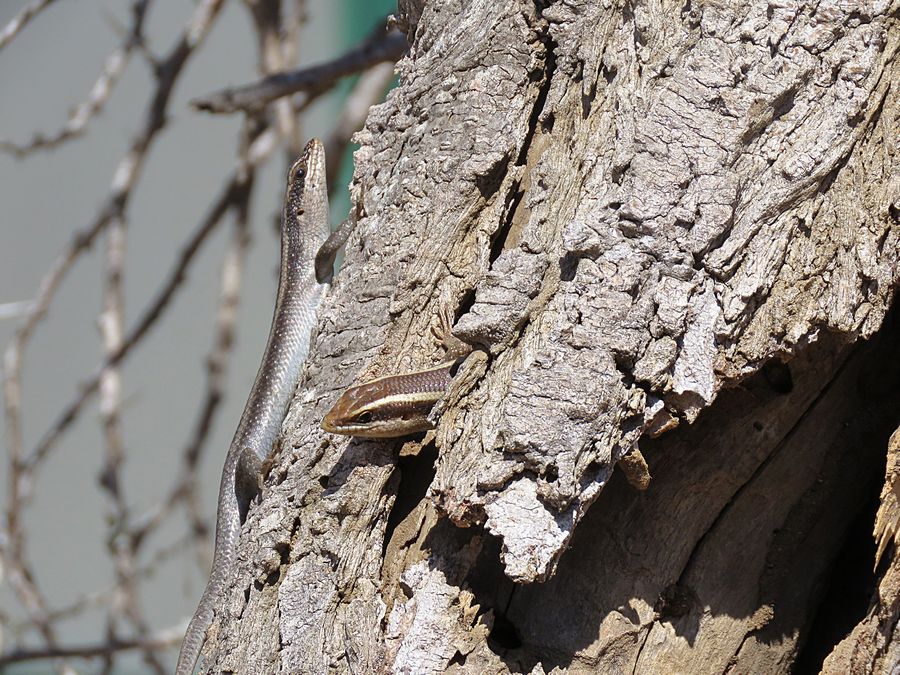
Note the one poking its head out from under the tree bark.
Link to Part Two, Page Three - Kruger National Park
Pat's Home Page